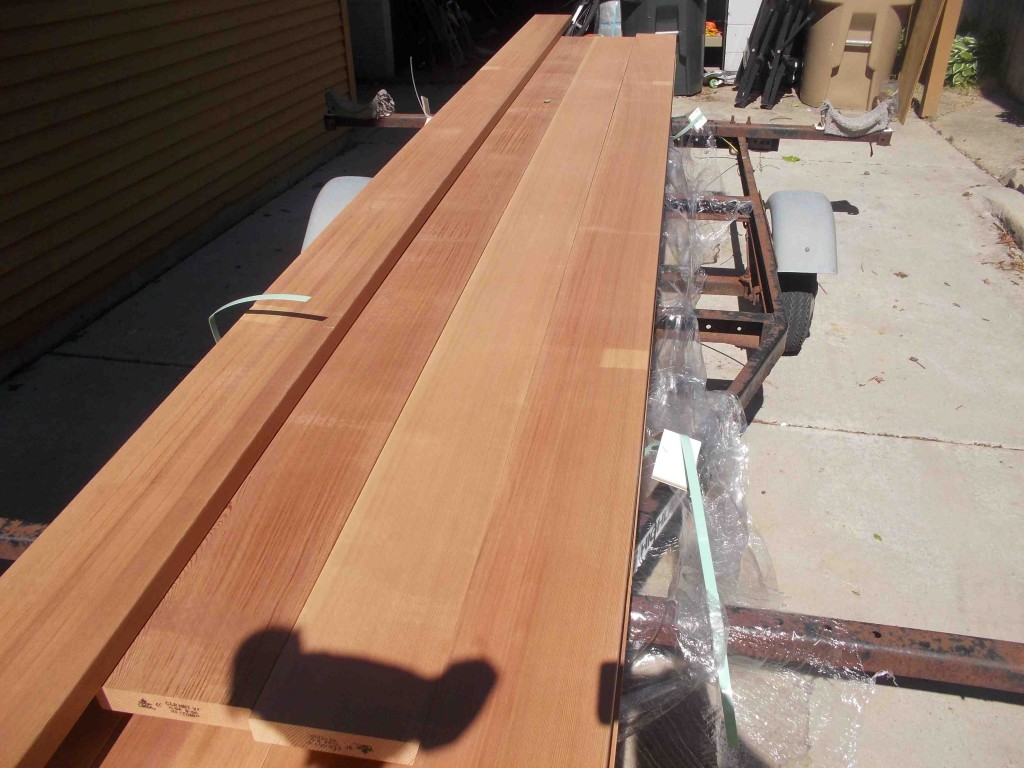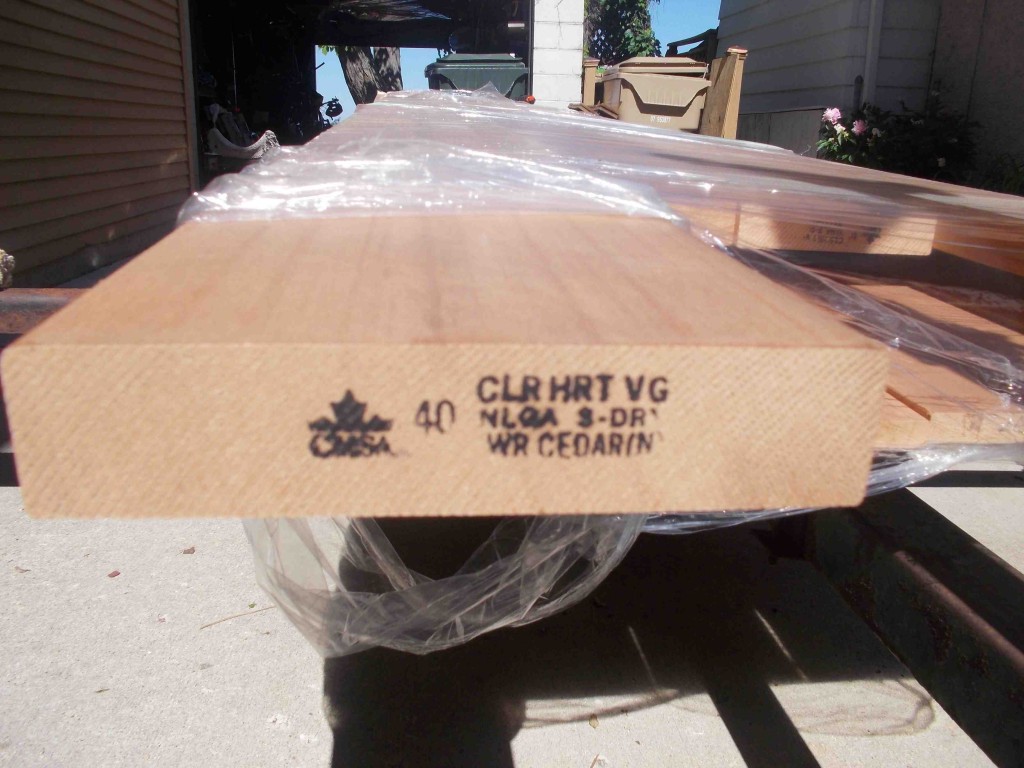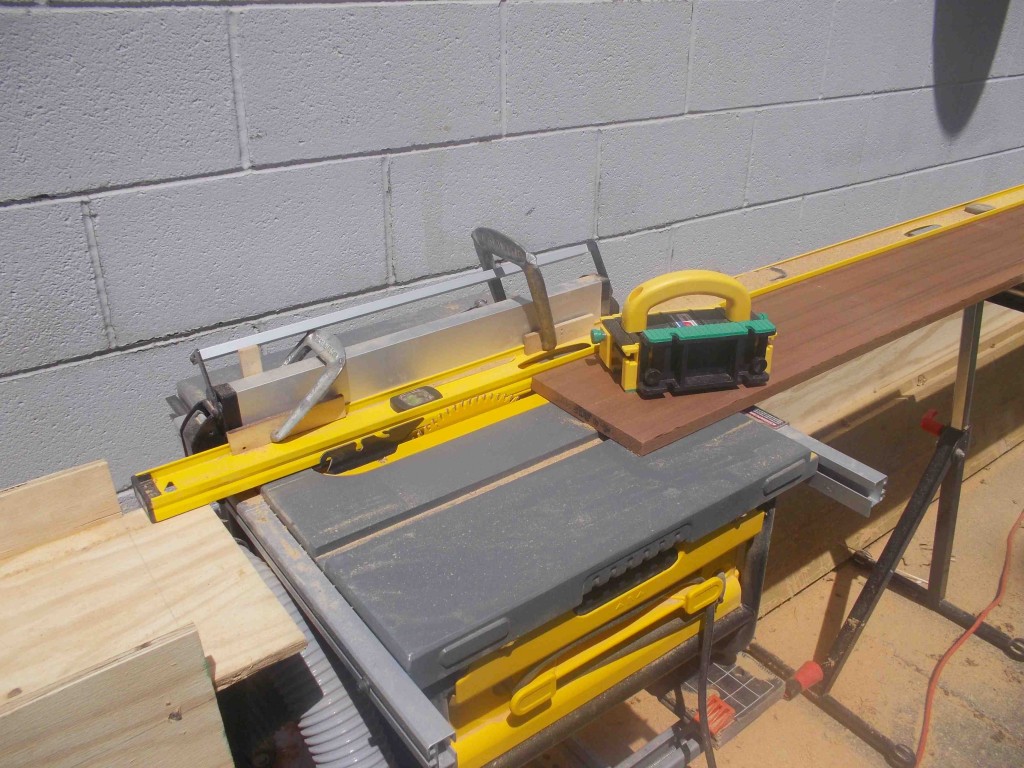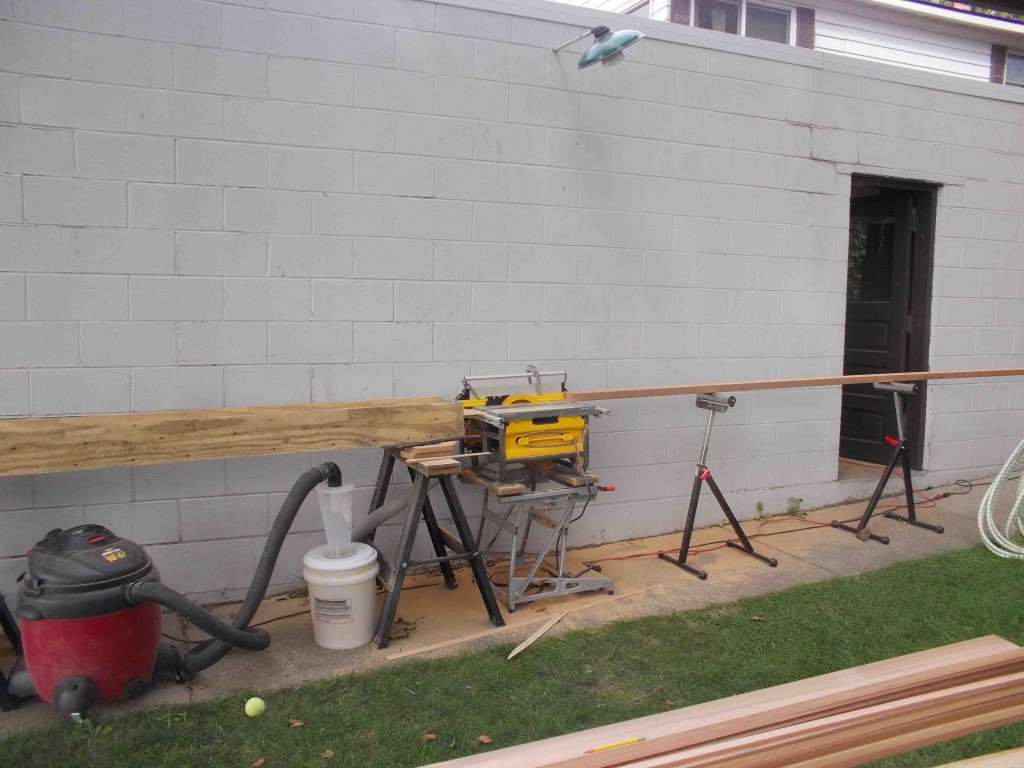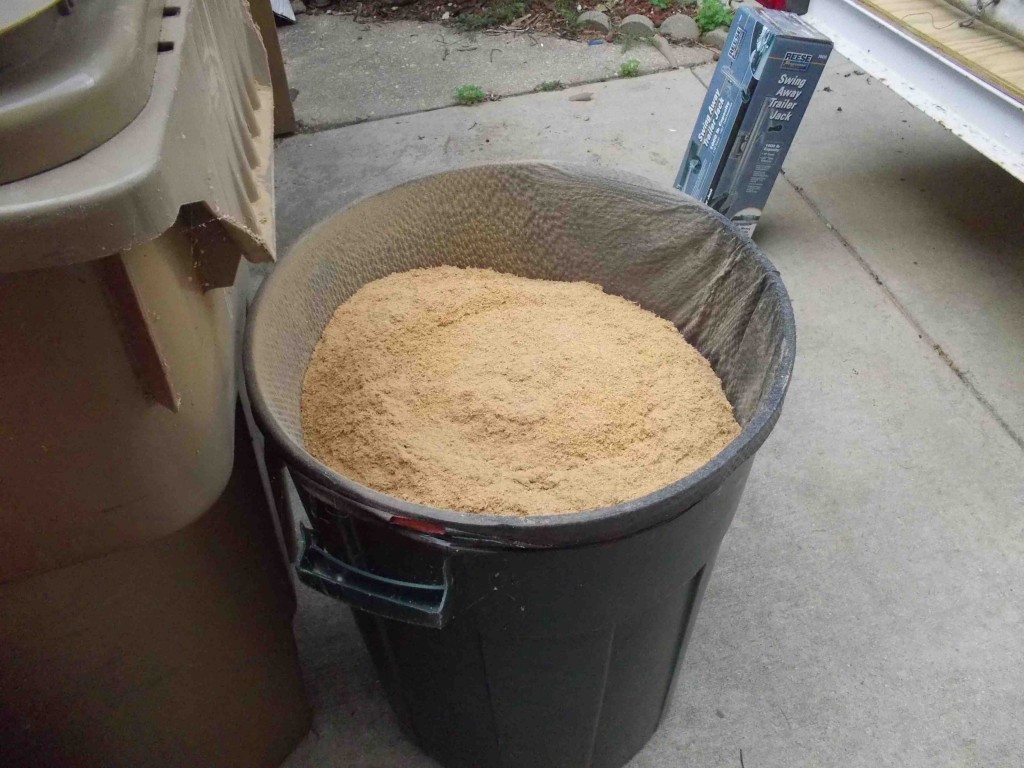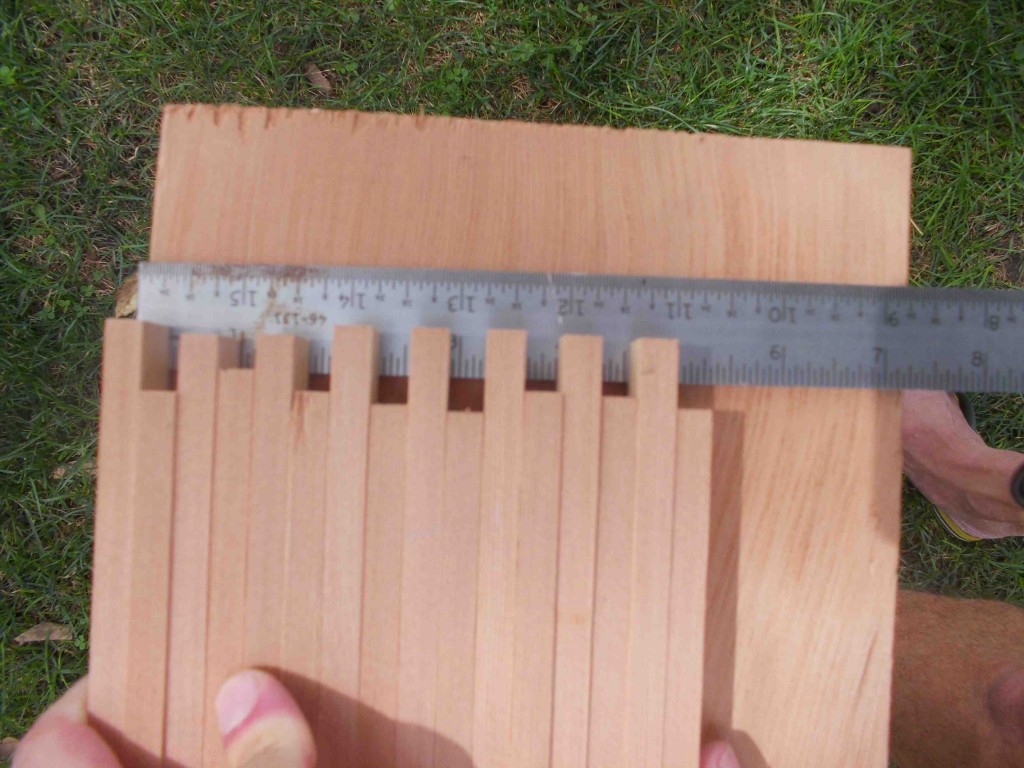There is no getting around it. If you are building a strip composite boat you need to cut strips, lots of them. For the Shadow I ended up cutting and glueing approximately 500 strips.
It all starts with the best lumber you can find. In my case $2000 worth of clear, vertical grain cedar procured through my local lumber yard, McCormick Lumber in Madison, WI. A combination of 1×8 and 2×8 of varying lengths from 8-16ft. Mostly 12 footers but since you are staggering the joints the other sizes come in handy.
Then set up your table saw as best as you can. It is very helpful to have a very long fence to help you feed the boards. Here I clamp my level to extend my fence. I also found that the Gripper pushblock was a safe and effective way of moving the board through the table saw. My Dewalt DW 745 compact table saw with a 80T fine cross cut blade had more then enough power and made it so that I did not feel like I needed to plane the strips.
Rollers on the feed side and a plywood box to contain the strip as it comes out. Also notice the shop-vac with a Oneida Dust Deputy Cyclone to help control the dust. The cyclone works great, and very little dust actually gets to the shop-vac. I just had to remember to empty it after every other board since I was generating that much dust.
How much dust you ask? 2 x 30 gallons of fine cedar dust. Just remember to use your dust mask. All of the chemicals that make cedar wood so rot resistant also makes it not so nice for your lungs
After milling a 8 inch board, I get 16 – 5/8″ strips and a little bit of waste. The kerf for my saw was 1/8″ and the math adds up. Also since my original boards were surfaced, I have one strip that has rounded edges. I ended up not using the strip with the rounded edges thus getting 15 strips per board. For this boat, I did not bother to bead and cove the strips, since that is unnecessary in the flat sections and in the curves sections a quick pass with a hand planer gave it the appropriate bevel for the strips that needed them.
It is a tedious process and it took me about 16 hrs to cut all the strips. It goes a little faster with an extra hand. It is critical that the infeed rollers and out feed box are level and square, otherwise the board tends to want to slide out and you will end up with a skinny strip. If you have a power planer and want to mill the strips to an exact thickness that could be helpful, but I found that my strips were good enough coming straight out of the saw. I ended up with a few skinny strips but the problem seemed mostly to be at tail end of the board, and I just cut out the offending end.
